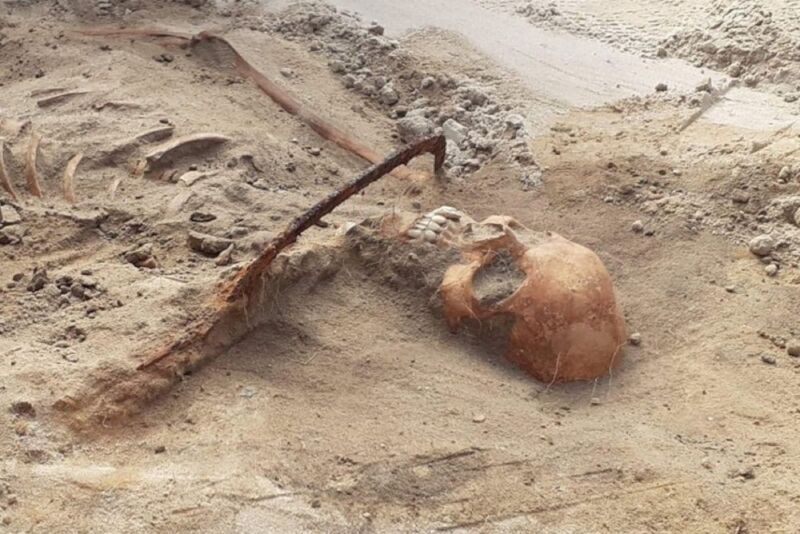Archaeologists unearth remains of 17th century female “vampire” in Poland

Enlarge / Archaeologists discovered what may be the skeleton of a 17th-century female "vampire" near Bydgoszcz, Poland. (credit: Mirosław Blicharski/Aleksander Poznań)
Vampire folklore across cultures is filled with various tips on how to keep a recently deceased person from rising from the grave as an undead fiend who preys on the living. Now archaeologists have uncovered an unusual example of people using these tips in a 17th century Polish cemetery near Bydgoszcz: a female skeleton buried with a sickle placed across her neck, as well as a padlock on the big toe of her left foot.
Tales of vampire-like creatures date back at least 4,000 years to ancient Mesopotamia. For instance, the Assyrians feared a demon goddess called Lamastu (literally, “she who erases”), who they said killed babies in their cribs or while still in the womb. Ancient Jewish texts mention a similar creature, Lilith, Adam’s first wife, who steals away infants and unborn children. Neither of these could be considered “vampires” in the modern sense, but they are the precursors to the Greek legend of Lamia, an immortal monster who sucked the blood from young children.
In Chinese folklore, another type of proto-vampire, called the k’uei, were reanimated corpses that rose from the grave and preyed on the living, as were the Russian upir, Indian vetala, Romanian strigoi, and Greek vrykolakas. News reports specifically referencing vampires didn't appear in English until 1732, as suspected "epidemics" of vampirism caused a mass hysteria that swept across Eastern Europe. By the 19th century, most of Europe was consumed by vampire hysteria, inspiring writers like John Polidori ("The Vampyre," 1819), Sheridan LeFanu (Carmilla, 1872), and of course, Bram Stoker, whose Dracula (1897) pretty much spawned the modern vampire genre.
Read 6 remaining paragraphs | Comments
from Gaming & Culture – Ars Technica https://ift.tt/BEOa0z5